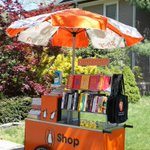Of course, Broadway producers typically gauge audience sentiment by watching and listening as the show goes on, noting when/where people laugh or seem bored. That's the time-honored tradition of out-of-town tryouts, when plays get tightened up and songs are added or cut according to audience reaction. Will hand-held meters help Somewhere in Time become a Broadway box-office smash? Only time will tell.
Hollywood studios have used sneak peek previews and audience reaction cards to test movies for years. These days, targeted market research is helping studios better understand the movie-going public's interests and preferences and fine-tune marketing for individual movies. Yet marketing research for movies has had a bumpy road, in part due to the difficulty of pinpointing what will attract audiences and still support the creative concept of each film.
One key element in marketing movies is the trailer--plastered all over social media, with the goal of going viral and generating sufficient buzz to boost ticket sales during the first weekend. "Trailer view searches are predictive," says Google's head of entertainment. According to Google's YouTube experience, "94% of variation in a film’s box office opening can be explained with trailer-related title search volume 4 weeks prior to release, coupled with seasonality and franchise status." In other words, studios use searches as metrics for anticipating and tracking movie marketing performance.





